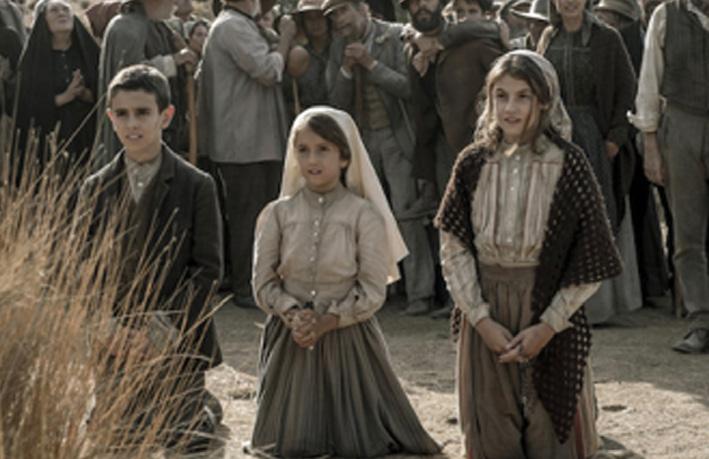
3 minute read
Film Notice: Marc Pontecorvo’s Fatima by Jo Siedlecka
Fatima – A Third Film
Jo Siedlecka
The incredible story of the apparitions of Our Lady to three young children near Fatima, Portugal, during the First World War, and her appeal for prayer and repentance as the path to peace, is brought vividly to life in this new film by award-winning Italian director Marc Pontecorvo.
Harvey Keitel plays a fictional character, a somewhat cynical professor Nichols who interviews Carmelite Sr Lucia, (Sonia Gragg) the only child visionary to have survived to adulthood. When he asks her why Our Lady chose her, she answers simply 'It was necessary.' Her memories are told in flashbacks.
In 1917 the recently established fiercely anti-Catholic Republic of Portugal was exhausted by the war. In early scenes of the film we see the young Lucia (Stephanie Gil) with her mother, Maria (Lucia Moniz) in the town square listening as the mayor Arturo (Goran Visnjic) reads out the list of local casualties. They are desperately concerned over their plight of Lucia’s elder brother Manual, who is serving in the army.
When Our Lady first appears to Lucia and her two younger cousins, Jacinta (Alejandra Howard) and Francisco (Jorge Lamelas), as they are tending their family’s sheep, she does not say who she is – but asks them to return on the 13th of the month – and not tell anyone. Little Jacinta (Alejandra Howard) spills the beans and soon the news is everywhere. Both Maria and the local parish priest, Fr Ferreira (Joaquim De Almeida), are understandably doubtful and try to convince the children to admit it was just a game. As the crowds following them increase, the Mayor becomes very concerned – as a representative of a government hostile to religion, the last thing he needs in his town is Our Lady of the Rosary attracting thousands of people.
The three Child Seers: Francisco, (Jorge Lamelas), Jacinta (Alejandra Howard) and Lucia (Stephanie Gil)
But in spite of long interrogations the children stick to their story. And Our Lady promises the children an event which will prove they were telling the truth. The film concludes with the 'Miracle of the Sun' which took place on 13 October 1917. In this extraordinary phenomenon, more than 70,000 people, including secular reporters and government officials, said they witnessed the Sun appearing to ‘dance’ or zig-zag in the sky, careen towards the Earth, and emit multicoloured light and radiant colours. According to these reports, the event lasted approximately 10 minutes.
Defying the government, the local community built a small chapel on the site, which continued to attract pilgrims. Francisco and Jacinta died from the Spanish Flu on 4 April 1919 and 20 February 1920 respectively. It would be another 13 years before the Catholic Church completed its investigations, and declared the miracle ‘worthy of belief’ on 13 October 1930. The Shrine of Our Lady of Fatima now, of course, attracts more than four million pilgrims a year. However, the film does not mention the particular devotion to Our Lady of Fatima of Pope St John Paul II. When he was shot at close range by an assassin on 13 May 1981, he attributed his survival to Our Lady. During one of three visits to the shrine he placed one of the bullets that had struck him in the crown of the statue.
The film concludes with a beautiful performance of an original song Gratia Plena performed by Andrea Bocelli and composed by Paolo Buonvino. There is also a quote from Albert Einstein, who once said: ‘There are two ways to live your life. One is as though nothing is a miracle. The other is as though everything is a miracle’. There have now been two other films about Fatima: the more sentimental Warner Bros. Hollywood-style The Miracle of Our Lady of Fatima released in 1952, and The 13th Day, beautifully made on a very small budget in 2009. Both are worth watching for the different insights they give. Watch a trailer here: www.youtube. com/watch?v=d1f_9_TGlpI










